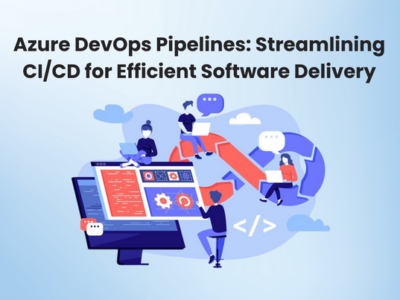When it comes to the crucial decision of staffing your IT department, the choice between handling it internally or externally can feel like a make-or-break scenario for your organization.
The impact can be monumental, affecting everything from costs to security measures.
By evaluating factors such as expertise, flexibility, and communication, you can start to navigate this complex terrain and steer your company in the right direction.
Cost Considerations
When deciding whether to staff IT internally or externally, consider the cost implications carefully. Opting for internal staffing may initially seem cost-effective as it provides more control over resources. However, it’s essential to factor in the long-term expenses, such as salaries, benefits, training, and infrastructure costs. On the other hand, external staffing can offer significant cost savings through reduced overhead expenses. By outsourcing to a vendor, you can leverage their economies of scale and expertise, leading to potential cost efficiencies.
Vendor management is a crucial aspect to consider when evaluating cost savings. Effective vendor management entails negotiating favorable contracts, monitoring performance, and ensuring service level agreements are met. By actively managing your vendors, you can maximize cost savings and maintain a high level of service quality. Additionally, outsourcing IT services can provide access to specialized skills that may not be available internally, further enhancing cost-effectiveness.
Evaluate the total cost of ownership and weigh the benefits of cost savings against the potential drawbacks of external vendor management when making your decision.
Expertise and Specialization
To maximize efficiency and effectiveness in your IT operations, it’s imperative to consider the expertise and specialization required for the tasks at hand. Specialized skills play a crucial role in ensuring that complex IT functions are carried out seamlessly. When evaluating whether to staff IT internally or externally, assessing the specific skills and knowledge needed is paramount.
In-house training can be a valuable tool for developing specialized skills within your team. By investing in training programs tailored to your organization’s unique IT requirements, you can cultivate a workforce that’s well-equipped to handle intricate technical challenges. This approach not only enhances the proficiency of your IT staff but also fosters a deeper understanding of your company’s systems and processes.
Furthermore, certain IT tasks demand a level of specialization that may be more efficiently obtained through external providers. In cases where the required expertise is highly specialized or temporary, outsourcing to professionals with the necessary skills can ensure tasks are completed proficiently and expediently. Balancing in-house expertise with external specialization can optimize your IT operations and drive overall business success.
Flexibility and Scalability
Consider how the dynamics of your IT operations can be optimized by assessing the flexibility and scalability requirements that align with your organization’s growth and adaptability goals. Scalability benefits play a vital role in accommodating your business’s evolving needs. By having the option to quickly and efficiently scale your IT resources, whether up or down, you can adapt to fluctuations in demand without major disruptions. This agility enables you to meet customer needs promptly and seize new opportunities as they arise.
Additionally, embracing remote work opportunities can enhance your organization’s flexibility. Allowing IT staff to work remotely can lead to increased productivity and satisfaction while also expanding your talent pool by enabling you to recruit from a more diverse geographical area. Remote work options can also contribute to scalability by providing a framework where resources can be easily adjusted based on workload requirements. By leveraging both scalability benefits and remote work opportunities, your IT operations can become more agile and responsive to the changing needs of your organization.
Control and Security
Enhance the control and security of your IT operations by implementing robust access management protocols and encryption measures. Control measures are essential to monitor and manage access to sensitive data and systems within your organization. By establishing strict access controls based on roles and responsibilities, you can prevent unauthorized users from compromising your data privacy. Implementing multi-factor authentication adds an extra layer of security, ensuring that only authorized individuals can access critical systems.
Encryption plays a vital role in safeguarding data privacy. By encrypting data both at rest and in transit, you can protect it from unauthorized access and ensure that even if data is intercepted, it remains unreadable. Utilizing strong encryption algorithms and key management practices further enhances the security of your data.
Regular audits and monitoring of access logs are crucial control measures to detect any unusual activities and potential security breaches promptly. By staying vigilant and proactive in implementing these security measures, you can significantly reduce the risk of data breaches and enhance the overall security posture of your IT operations.
Communication and Collaboration
Strengthening communication channels and fostering collaborative environments are paramount in optimizing operational efficiency and team productivity within your IT framework. Effective communication is especially critical in today’s landscape of remote work, where team members may be geographically dispersed. Utilizing tools such as video conferencing, instant messaging platforms, and project management software can enhance real-time interactions and facilitate seamless information sharing. Moreover, establishing clear communication protocols and regular check-ins can mitigate misunderstandings and keep everyone aligned with project goals.
When it comes to team dynamics, promoting a culture of collaboration is key. Encouraging open dialogue, active listening, and idea-sharing can spark innovation and problem-solving within your IT team. Assigning roles and responsibilities based on individual strengths and expertise can also foster a sense of ownership and accountability, driving collective success. By nurturing strong communication practices and cultivating a collaborative environment, you can enhance teamwork, boost morale, and ultimately elevate the overall performance of your IT department.
Frequently Asked Questions
How Does Outsourcing IT Services Affect Employee Morale and Job Satisfaction?
Outsourcing IT services impacts employee morale and job satisfaction by potentially reducing employee engagement and productivity. When external vendors handle IT, internal staff may feel disconnected, leading to decreased job satisfaction and morale.
What Are the Potential Risks Associated WITh Outsourcing IT Services?
In the realm of outsourcing IT services, tread carefully on the shifting sands of potential risks. Cost savings may beckon, but beware the lurking shadows of data security threats and the specter of communication breakdowns.
How Can a Company Ensure Smooth Integration and Coordination Between Internal and External IT Teams?
To ensure smooth integration and coordination between internal and external IT teams, you must focus on effective communication strategies and utilize collaboration tools. Prioritize team building efforts and optimize workflows for seamless operations and successful project outcomes.
Are There Any Legal or Compliance Implications to Consider When Outsourcing IT Services?
When considering outsourcing IT services, you must assess legal implications and compliance considerations. Ensuring vendor contracts align with data protection regulations and industry standards is crucial. Conduct thorough due diligence to mitigate risks and maintain regulatory compliance.
What Are the Long-Term Implications of Outsourcing IT Services on the Company’s Overall Strategic Goals and Objectives?
Imagine the ripple effect of outsourcing IT services on your strategic goals. Cost savings can boost competitiveness. Aligning IT with your strategy ensures business continuity. Make informed decisions for long-term success and sustained advantage.
Conclusion
In conclusion, when deciding whether to staff your IT needs internally or externally, consider cost, expertise, flexibility, control, and communication.
Do you prioritize cost savings or specialized expertise? Are you looking for scalability or strict control over your IT operations?
By carefully weighing these factors, you can determine the best approach for your organization’s unique needs. Ultimately, the right choice will depend on your specific goals and priorities.













